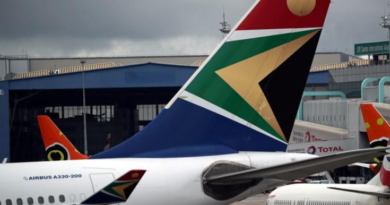Cash-in-transit crime drops, but concerns abound
During Easter 1977, R1 million in cash and jewellery was stolen from Standard Bank in Krugersdorp.
In a crime that remains unsolved, the robbers gained entry by digging a tunnel below the bank.
Today, criminals have become much more sophisticated, but cash crime remains a headache. Although digital payments have become mainstream, South African Reserve Bank statistics show that notes and coins in circulation have been growing steadily, reaching R140 billion in 2018.
Statistics collated by Cash Connect in collaboration with the Consumer Goods Council of South Africa and the South African Banking Risk Information Centre show that there has been a 23% drop in cash-in-transit crime in the year to February 28, 2019 compared to the same period a year earlier. Retail cash crime, which includes ATMs in the retail space, fell 7%.
Richard Phillips, joint-CEO of Cash Connect, says that while the figures have come down, they are still extremely high.
Towards the middle of 2018, there was an enormous amount of activity on the part of the collective crime fighting cluster to address cash-in-transit crime and, because of that, there has been a significant drop in hits against cash-in-transit armed vehicles.
Phillips says there is a lot of cooperation between the private sector and the police.
No cohesive strategy
“What I’m concerned about is that there doesn’t seem to be a cohesive, collective crime-fighting strategy implemented that ensures continuity of the fight.”
Over the years, there seem to be periods where cash-in-transit heists spike significantly, and then suddenly everybody wakes up and fights, only for the situation to go through the roof again after a while, he adds.
“I think that is an unacceptable situation and it can never come right unless you have a sustainable integrated approach to cash crime.”
Forty-six percent of all retail cash crime takes place in Gauteng.
Source: Cash Connect
While there could be many reasons for the trend, Phillips says it could be due to Gauteng’s proximity to the source of explosives, which often come from the mining industry.
Fifty-four percent of the attacks against Cash Connect over the last year were bombings where plastics explosives were used.
“We’ve also noticed quite a significant improvement in the quality of the professionalism with which the bombers go about their business of placing and detonating their explosives.”
Task teams come and go
Dr Johan Burger from the Institute of Security Studies says the police are currently crisis-driven and when something comes up as a major problem – like the cash-in-transit robberies during 2017/18 – task teams are put together to address these problems.
“Very often the problem with that approach is it is sporadic, and after this is more or less brought down – not necessarily under control – then the police have to move on to other stuff.”
While there has been a measure of success in arresting some of these cash-in-transit robbers, they usually just move to other targets.
“What we have in practice is a circulation of the same kind of syndicates and we just move from one target to another depending on what the risks are,” Burger says.
There have been some improvements in the police given the appointment of a new Hawks head, Godfrey Lebeya, and the new head of crime intelligence, Peter Jacobs, he adds.
“The problem is those are individuals. The problems that they inherited are far bigger than they are able to handle at the moment.”
With the Easter weekend approaching, retailers have been warned that there was a 16% increase in retail robberies and burglaries over Easter last year compared to the prior year and have been advised to be vigilant.
Source: moneyweb.co.za


